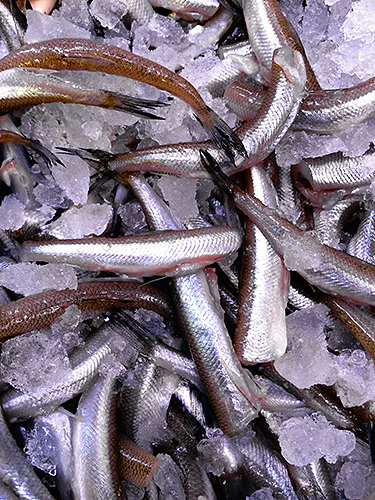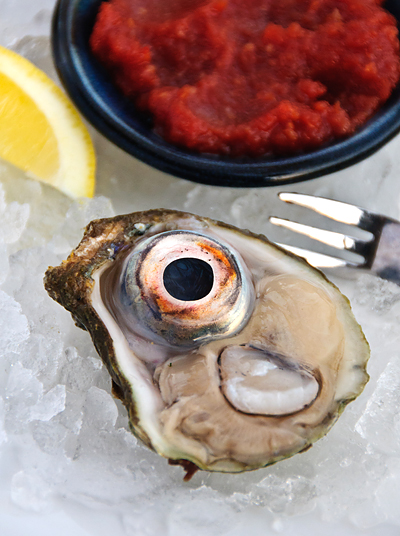Springtime in Michigan = SMELT!
Ahh…sweet spring has arrived! We’re in the perfect moment of soft spring breezes, fresh new life popping up all around us, and Michigan smelt frying in the pan!
 Like many fish that we consider to be our own; smelt, all the Michigan salmons, rainbow trout, and carp, to name a few, aren’t really natives. Our smelt originally came from hatcheries in Maine. They were first introduced into the St. Marys River back in 1909 to hopefully become feed for Lake Michigan salmon, but after repeated failures the stocks never survived. Smelt were stocked in Crystal Lake in 1912 as feed for land locked salmon and they not only survived but also flourished. They made their way into Lake Michigan and by the spring of 1920 so many fish were running into Cold Creek, flowing through the town of Beulah at the head of Crystal Lake, that they were overflowing the banks! Fisherman flooded into Beulah in such numbers that the state police had to be called in to control the crowds. The tradition of “smelt dipping” had begun.
Like many fish that we consider to be our own; smelt, all the Michigan salmons, rainbow trout, and carp, to name a few, aren’t really natives. Our smelt originally came from hatcheries in Maine. They were first introduced into the St. Marys River back in 1909 to hopefully become feed for Lake Michigan salmon, but after repeated failures the stocks never survived. Smelt were stocked in Crystal Lake in 1912 as feed for land locked salmon and they not only survived but also flourished. They made their way into Lake Michigan and by the spring of 1920 so many fish were running into Cold Creek, flowing through the town of Beulah at the head of Crystal Lake, that they were overflowing the banks! Fisherman flooded into Beulah in such numbers that the state police had to be called in to control the crowds. The tradition of “smelt dipping” had begun.
There were so many fish they were caught simply by dipping a net for them. The Michigan spring ritual of making a bonfire stream side and filling buckets, garbage cans and even pick up trucks full of smelt, then staying up all night cleaning them with a pair of scissors and frying ’em up continued on for years. By 1936 these little fish were in all of the Great Lakes and there was a huge sport and commercial fishery for them with fresh and frozen smelt being shipped all over the country and as far away as Japan.

Anthony Bourdain at Monahan’s in 2010 about to enjoy a plate of Michigan smelt on a gorgeous spring day.
If you’ve ever experienced the sweet crunch of a fried smelt, salted and eaten whole you’d know what all the fuss is about! When Anthony Bourdain was at the store in April 2010 to film a promo for his book Medium Raw, we asked him what he’d like us to cook up for him. He eyed the pile of fresh smelt and asked “Are those the little guys you eat whole? I’m all over that.”
The days of truck loads of smelt are, at least for now, over. Populations have gone down over the years, partially the work of invasive species like zebra mussels competing with them for food, and there’s even a 2 gallon limit for sports fishermen now. Fortunately, we will have our season’s first this weekend.
As far as cooking methods, in my opinion, there’s only one way to properly cook smelt and that’s to fry them. Lightly dusted and pan fried or deep fried. Here’s our recipe for fried smelt at the Market and two other great ways to serve them after they’ve been fried, smelt nanbanzuke and smelt escabeche.

 Previous Post
Previous Post







I would like to know when smelt is available to purchase.
Hi Clare,
Lake smelt has been fairly scarce. We’re hoping to see some within the next few weeks, fingers crossed.